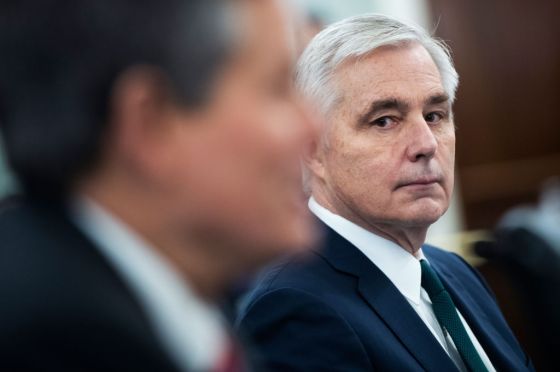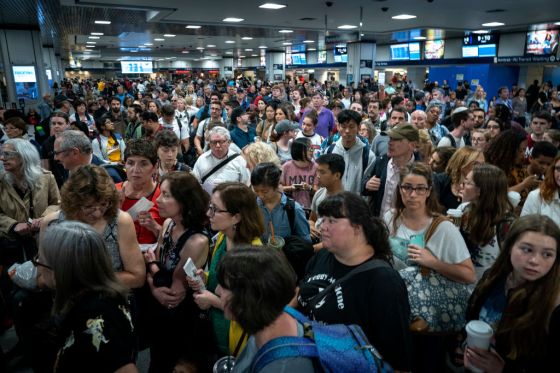Across much of the U.S., taking the train isn’t exactly convenient. Slow service, delays, and poor access often make alternatives like flying or driving more attractive. But on March 31, President Joe Biden—nicknamed “Amtrak Joe” for his frequent trips between Delaware and Washington, D.C.—unveiled his American Jobs Plan, which among other things proposes $80 billion in new funding for Amtrak, the country’s major passenger rail service. Could that be enough money to get the country the high-speed rail network it deserves?
Likely not. But Amtrak CEO William Flynn, who took charge of the semi-public, for-profit rail operator last spring, has big plans regardless. Before the pandemic, Amtrak—which turned 50 years old on May 1—looked to be on the right track: it posted revenue of about $3.5 billion in fiscal 2019, up nearly 3.5% year-over-year, thanks largely to record ridership. But revenue crashed by about 31% in 2020 amid the COVID-19 outbreak, falling to $2.4 billion in fiscal 2020. After weathering the pandemic, Flynn’s next job is to get Amtrak rolling again—as well as dealing with skeptical lawmakers who say the partially-subsidized service is a waste of taxpayer dollars.
In a recent interview with TIME, Flynn said his first priority is expanding passenger service to new cities, while also assessing and repairing existing infrastructure—primarily along the vital Northeast Corridor, which runs between Washington, D.C., through New York City and up to Boston and carried 12.5 million passengers in 2019. Flynn says about half of the $80 billion would go toward long-overdue repairs of century-old infrastructure along that route, like the East River Tunnel, Hudson River Tunnel, and the Susquehanna River Bridge. The rest would be used to expand intercity passenger rail service and repair infrastructure outside of the Northeast Corridor.
“It really underscores the level of investment that’s required from two perspectives,” says Flynn. “To bring our Northeast Corridor and Washington-to-Boston overall underlying infrastructure to a state of good repair, because there have been decades of underinvestment in that corridor. But in addition, the President talked about expanding intercity passenger rail across our country, and that’s something that we have a very clear plan and strategy for as well.”

What about high-speed rail? The U.S. leads the world with over 125,000 miles of rail lines criss-crossing the country, but it’s sorely lagging in speed. The U.S. doesn’t have a single high-speed rail line, as measured by the International Union of Railways, which holds that “high-speed” trains should reach speeds of 124-155 miles per hour. Myriad ultrafast projects have been proposed over the years. Redmond, Wash.-based Microsoft has poured over half a million dollars into feasibility studies around the high-speed Cascadia Rail project, an effort to link cities in the Pacific Northwest. Texas Central Railway, a private railway company, is in talks to build a high-speed line connecting Dallas and Houston. Finally, after multiple delays and budget overruns, the California High Speed Rail Authority’s project aims to begin service around 2029, according to CEO Brian Kelly. But none of these projects are remotely near complete, and any one of them could be derailed along the way.
Amtrak is planning some minor speed upgrades. Improvements along the Northeast Corridor will allow Amtrak’s latest Acela trains to hit a top speed of around 155 miles per hour, but that will only be possible along about 35 miles worth of track between Boston and New Haven, Conn. For the rest of the route, riders can expect a more ho-hum top speed of around 90 miles per hour. By contrast, true high-speed rail systems in countries like Japan and France can reach up to 200 miles per hour for long stretches of rail. But true high-speed rail isn’t on the table for Amtrak, which is in desperate need of basic repairs and other investments before major upgrades are possible.
Still, Amtrak riders may be able to expect smaller improvements in the near future, like more frequent trains and service in new cities, including Chattanooga, Tenn. and Columbus, Ohio. “As we look to grow, as we look to those very large communities that have no or very little passenger rail service today, a large part of that growth will occur on freight rail infrastructure,” he says.
That may be a sensible short-term strategy. After all, it’s easier to put more trains on existing lines than it is to build high-speed rail, which requires massive investments as well as solutions to problems like land rights. But the plan may not attract riders. Amtrak lines that rely on freight rail often suffer from delays, as freight trains get priority over their passenger-hauling cousins, contributing to Amtrak’s reputation for slow service. Moreover, Christopher Barkan, a professor at the University of Illinois and executive director of the Rail Transportation and Engineering Center (RailTEC), says that running more passenger trains on freight lines could cut into freight rail operators’ profits. “They have just enough infrastructure to meet their needs,” says Barkan. “So if we’re going to add passenger trains to this network, then we need to add infrastructure and a more sophisticated control system.”

Some rail advocates argue that getting U.S. train speeds on par with that of other countries is the only way to get Americans riding the rails again—and there are environmental gains to boot, as high-speed lines are typically electrified, eliminating the need for diesel engines. At least one U.S. Congressman is pushing the Biden Administration to think bigger. “If we just put more passenger trains on already congested freight lines, people are not going to leave their cars to ride the train,” says Massachusetts Congressman Seth Moulton, a Democrat. In December of last year, he introduced a bill calling for the construction of an ambitious national high-speed rail system. His American High-Speed Rail Act, currently referred to committee, calls for $205 billion in federal investment over five years, and would “foster a growing national high-speed rail network, including allowing the designation of new corridors,” per a summary from his office, as well as encourage public-private partnerships, a strategy shown to be successful in countries like Japan.
“Americans will ride the train if the service is better, that’s the bottom line,” adds Moulton. “If you have the choice between a five-to-six hour drive in congested traffic, or a 90-minute trip with a huge reclining seat and bar service, you’ll take the train.”
For now, Flynn is hoping that a more realistic strategy will help Amtrak find its way out of the pandemic and back into Americans’ hearts, especially as people feel increasingly comfortable traveling as mass vaccination continues. “There’s so much latent capability in the existing structures that need, in some places, reinvestment where…we can build out train schedules and services that you and I would want to take,” says Flynn. “That investment has to be key to the strategy, the national strategy.”
from TIME



0 Comments
Give your valuable feedback !